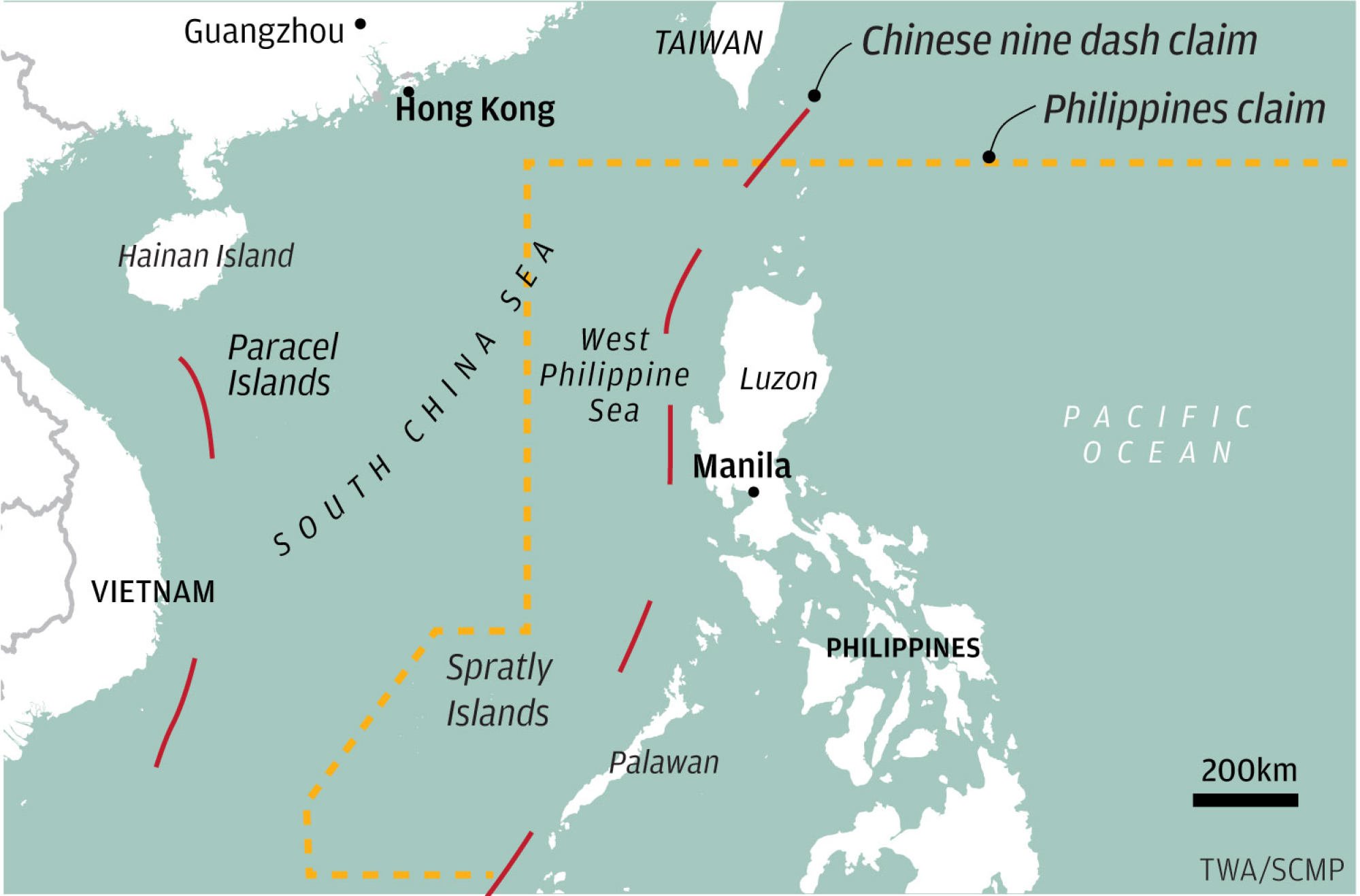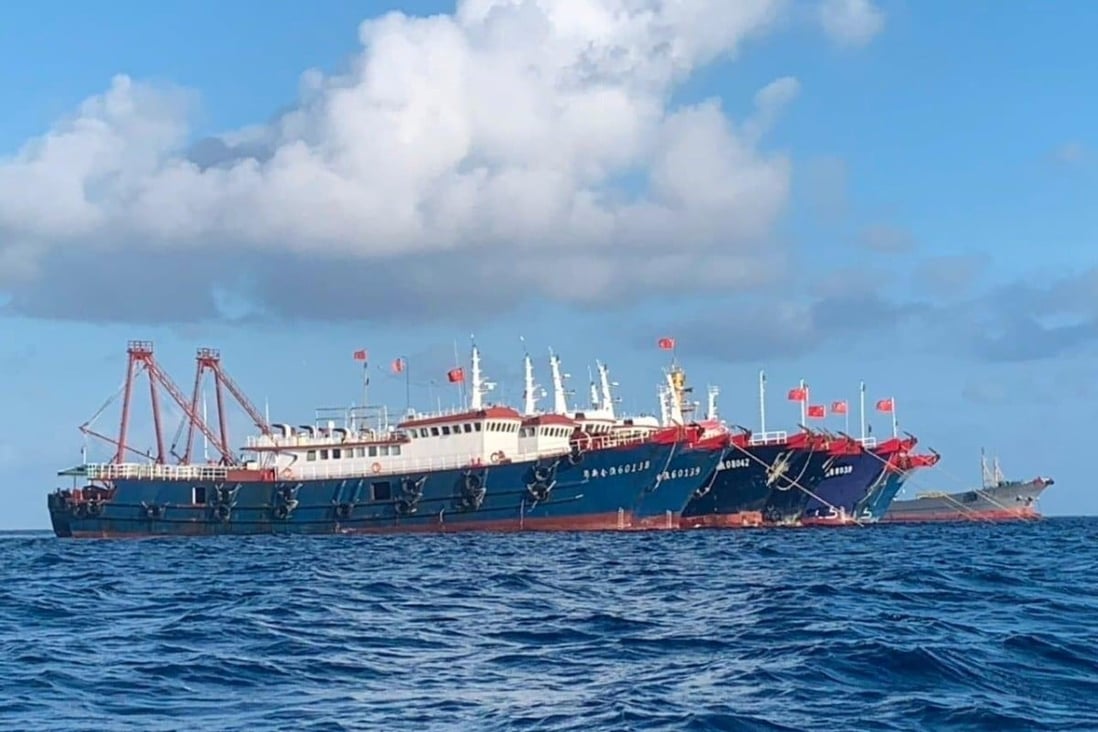- Manila has demanded more than 200 Chinese vessels leave Whitsun Reef as a South China Sea dispute again threatens to escalate into confrontation
- Chinese and Philippine foreign ministers set to meet, days after Philippines said its military aircraft received warnings from the anchored ships
Manila on Wednesday called on China to “immediately withdraw” the vessels, which are inside its exclusive economic zone (EEZ) at the reef in the Spratly Islands, about 320km (175 nautical miles) west of the Philippine province of Palawan. Sovereignty over all or some of the islands is claimed by China, Taiwan, Vietnam, the Philippines, Brunei and Malaysia.
A report released last Friday by Simularity, a US-based geospatial tech company that monitors the South China Sea, showed vessels had been at the reef – also called Niu’e Jiao in China and Julian Filipe Reef in the Philippines – since December. The Philippines says the ships are maritime militia, while China insists they are civilian fishing boats.
Jay Batongbacal, associate professor at the University of the Philippines College of Law, said Wang and Locsin would each want assurances from their meeting.

“This was the largest ever concentration of Chinese vessels found in the Philippine EEZ, anchored and lashed together next to an unoccupied and submerged coral reef,” Batongbacal said. “Philippine government officials are worried that this signals yet another mode of establishment of a continuous presence, tantamount to a new occupation, of a feature in the West Philippine Sea by Chinese maritime militia.
“China wants to put this issue to bed as soon as possible because it contrasts sharply with the image it is trying to project, of being a dependable and helpful regional partner.
“Wang Yi would probably want assurances from Locsin that the issue will be resolved as quickly and quietly as possible, so that more favourable interactions between the two countries, such as Covid-19 cooperation, will be highlighted. Locsin, on the other hand, needs to secure a credible effort on China’s part to withdraw its fleet.”
Tweeting about the incident before he departed for China, Locsin warned about the possibility of China shooting down Philippine aircraft in the area. “If they had shot down our military aircraft, two things would happen: World War III or the end of US prestige,” Locsin tweeted.
On Thursday, Chinese foreign ministry spokeswoman Hua Chunying repeated Beijing’s claim that the vessels were “sheltering from wind”. She said the reef belonged to China and relations with Manila should not be affected.
“We know some forces have been trying to drive a wedge between China and the Philippines. We trust that the Philippine side will be able to distinguish right from wrong and not be fooled,” she said.

